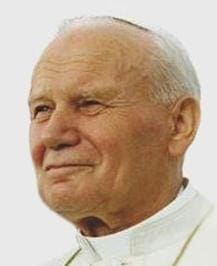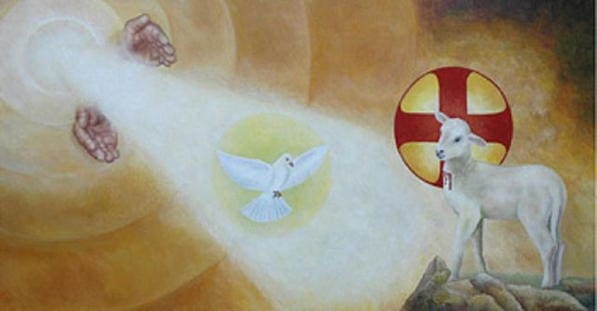Called to Holiness (Part II of II)
In part I, we examined what the universal call to holiness means, generally speaking. In today’s post, we will look at what Saint John Paul II specifically says about the call to holiness, training in holiness and why this turn to holiness of life and depth in prayer is important.
John Paul II goes on to call the parishes of the third millennium to become schools of prayer and places where “training in holiness” is given:
Our Christian communities must become genuine “schools” of prayer, where the meeting with Christ is expressed not just in imploring help but also in thanksgiving, praise, adoration, contemplation, listening and ardent devotion, until the heart truly “falls in love.” . . . It would be wrong to think that ordinary Christians can be content with a shallow prayer that is unable to fill their whole life.” (Novo Millennio Ineunte NMI, no. 33)
 The Pope cites several reasons why this turn to holiness of life and depth in prayer is important. Besides the fact that it is quite simply part and parcel of the Gospel message, he points out that the supportive culture of “Christendom” has virtually disappeared and that Christian life today has to be lived deeply, or else it may not be possible to live it at all. He also points out that in the midst of this world-wide secularization process there is still a hunger for meaning, for spirituality, which is sometimes met by turning to non-Christian religions. It is especially important now for Christian believers to be able to respond to this hunger and “show to what depths the relationship with Christ can lead” (NMI, nos. 33, 40).
The Pope cites several reasons why this turn to holiness of life and depth in prayer is important. Besides the fact that it is quite simply part and parcel of the Gospel message, he points out that the supportive culture of “Christendom” has virtually disappeared and that Christian life today has to be lived deeply, or else it may not be possible to live it at all. He also points out that in the midst of this world-wide secularization process there is still a hunger for meaning, for spirituality, which is sometimes met by turning to non-Christian religions. It is especially important now for Christian believers to be able to respond to this hunger and “show to what depths the relationship with Christ can lead” (NMI, nos. 33, 40).
Recognizing how challenging this call is, John Paul II makes clear that it will be difficult to respond adequately without availing ourselves of the wisdom of the mystical tradition of the Church-that body of writings and witness of life that focuses on the process of prayer and stages of growth in the spiritual life. He tells us why the mystical tradition is important and what we can expect it to provide for us: “This great mystical tradition . . . shows how prayer can progress, as a genuine dialogue of love, to the point of rendering the person wholly possessed by the divine Beloved, vibrating at the Spirit’s touch, resting filially within the Father’s heart” (NMI, no. 33).
These are truly extraordinary words that the Holy Father uses here. How is this extraordinary depth of union with the Trinity possible? It is indeed the answer to this question that the mystical tradition gives us. John Paul II makes clear that this depth of union isn’t just for a few unusual people (“mystics”) but is a call that every Christian receives from Christ Himself. “This is the lived experience of Christ’s promise: ‘He who loves me will be loved by my Father, and I will love him and manifest myself to him’ (Jn. 14:21)” (NMI, no. 32).
The Pope then summarizes some of the main wisdom taught by the mystical tradition about the spiritual journey:
It is a journey totally sustained by grace, which nonetheless demands an intense spiritual commitment and is no stranger to painful purifications (the “dark night”). But it leads, in various possible ways, to the ineffable joy experienced by the mystics as “nuptial union.” How can we forget here, among the many shining examples, the teachings of Saint John of the Cross and Saint Teresa of Avila? (NMI, no. 32)
The whole purpose of our creation, the whole purpose of our redemption is so that we may be fully united with God in every aspect of our being. We exist for union; we were created for union; we were redeemed for eternal union. The sooner we’re transformed, the happier and the more “fulfilled” we’ll be. The only way to the fulfillment of all desire is to undertake and complete the journey to God.
In the Old Testament it was clear that to actually see God in our untransformed human condition was to be destroyed (see Ex. 33:18-20). It is only Jesus who sees the face of the Father, and it is through Jesus that we  can be made ready to share in His vision of the Father. It is through our union with Jesus, our contemplation of His “face,” that we are, little by little, transformed and made ready for the beatific vision, which is so much more than what we commonly understand as “seeing”; it is indeed a participation in the ecstatic knowing and loving of the Trinity, a participation in Love itself.
can be made ready to share in His vision of the Father. It is through our union with Jesus, our contemplation of His “face,” that we are, little by little, transformed and made ready for the beatific vision, which is so much more than what we commonly understand as “seeing”; it is indeed a participation in the ecstatic knowing and loving of the Trinity, a participation in Love itself.
Editor’s Notes: This post originally appeared in Lay Witness Magazine, on May 1, 2006 in the May/June 2006 issue. Used with permission.
Ralph Martin is the author of a number of articles and books the most recent of which are The Urgency of the New Evangelization: Answering the Call (2013), as well as Will Many Be Saved? What Vatican II Actually Teaches and Its Implications for the New Evangelization (2012) and The Fulfillment of All Desire: A Guidebook for the Journey to God Based on the Wisdom of the Saints (2006).
Art: Pope John Paul II on 12 August 1993 in Denver (Colorado), Public Papers of the Presidents of the United States – Photographic Portfolio–1993 Vol. II, PD-US; Santissima Trinità , 193×100 cm. del Polittico “Vergine di Caacupé“, Cargale-Vittorio Giardini, date=2oo8 permission; Wikimedia Commons.





